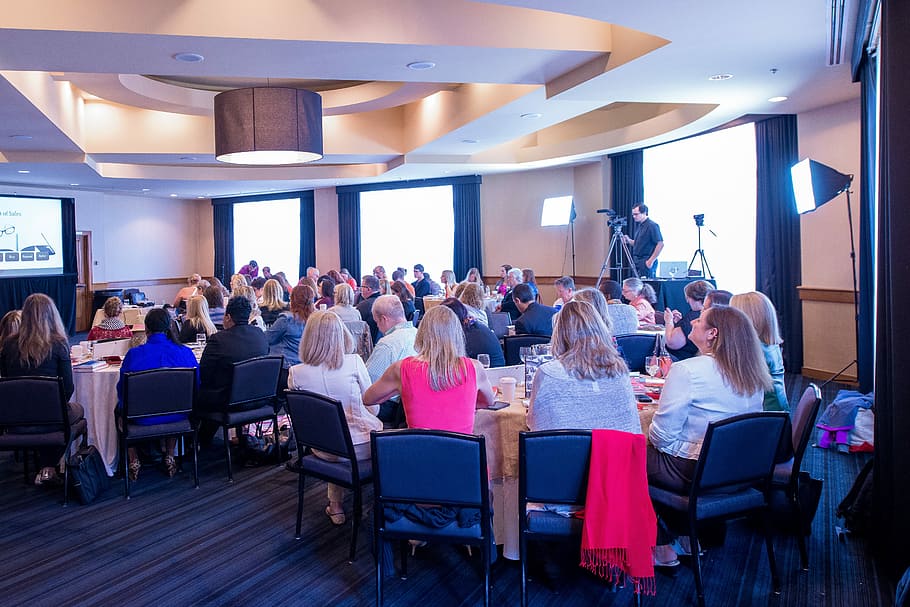
Marketing a conference is no small feat, especially in an era where digital engagement and in-person experiences are competing for attention. Conference marketing goes beyond merely promoting an event; it’s about creating a compelling narrative, building anticipation, and driving participation.
With the right strategies in place, event organizers can maximize attendance, boost engagement, and ensure that the event is both impactful and memorable. This blog will explore seven effective conference marketing strategies that every event organizer can use to elevate their conference marketing efforts.
1. Develop a Strong Pre-Event Marketing Plan
A successful conference marketing strategy starts long before the event takes place. Building momentum early can drive registrations and increase awareness of your event. An effective pre-event marketing plan should include the following elements:
- Create a Detailed Timeline: Start marketing your conference at least 6-9 months in advance. Break down your marketing activities into phases: awareness, engagement, registration, and last-minute push. Each phase should have specific goals, whether it’s to increase visibility, engage attendees, or boost ticket sales.
- Use Event Landing Pages: A well-designed, user-friendly event landing page can act as the hub of your marketing efforts. Include all the relevant details—event date, location, speakers, agenda, and registration information. Use clear calls to action (CTAs) like “Register Now” or “Save Your Spot” to encourage conversions.
- Leverage a Countdown Strategy: Countdown timers are a psychological trigger that can create a sense of urgency. Include a countdown on your landing page and in emails, offering special incentives such as early bird pricing or group discounts for those who register early.
Pro Tip: Start a blog or content series leading up to the event that highlights conference topics, interviews with speakers, or industry trends. This will keep your audience engaged and interested in attending.
2. Leverage Social Media and Content Marketing
Social media is a crucial platform for building awareness and engagement around your conference. By creating engaging and shareable content, you can reach a wider audience and generate excitement for your event.
- Create a Unique Hashtag: A unique and memorable event hashtag will allow attendees, speakers, and sponsors to tag your conference on social media. Hashtags help consolidate conversations and make it easier for people to find and follow updates about the event.
- Engage with Video Content: Video marketing is an incredibly effective tool in promoting conferences. Share teaser videos, speaker introductions, behind-the-scenes footage, or past event highlights. Video content typically performs better than static images or text posts, especially on platforms like Instagram, Facebook, and LinkedIn.
- Run Social Media Contests: Host contests that encourage sharing or user-generated content. For example, you can offer free tickets to those who share your post and tag friends, or create a fun quiz related to your conference topic where winners get discounted tickets.
Pro Tip: Use paid social ads strategically. Platforms like LinkedIn and Facebook allow for precise targeting by industry, job title, and interest, enabling you to reach your ideal audience.
3. Email Marketing and Personalized Outreach
Email marketing is one of the most powerful tools for promoting a conference, but to maximize its effectiveness, personalization and segmentation are key. Sending targeted messages that resonate with specific groups within your audience can significantly boost engagement and registration.
- Segment Your Email List: Segment your list based on past attendee data, job titles, industries, or geographic location. This allows you to send personalized messages to different groups, such as special offers for returning attendees or industry-specific session highlights.
- Drip Campaigns: Set up a drip campaign that sends a series of emails leading up to the event. Start with an announcement email, followed by details about the agenda, speaker profiles, and any early bird or special offers. As the event date approaches, send reminder emails and last-minute registration incentives.
- Personalized Invitations: For VIPs, industry leaders, or influencers, send personalized email invitations that highlight why they should attend and what exclusive opportunities they will get from participating in your conference.
Pro Tip: Include testimonials from past attendees or notable speakers in your email marketing. Social proof is a powerful motivator for potential registrants.
4. Partner with Influencers and Industry Leaders
Collaborating with influencers and industry leaders can give your conference marketing a significant boost. Their endorsement can lend credibility to your event, reach new audiences, and enhance attendee trust.
- Identify Relevant Influencers: Choose influencers, bloggers, or industry experts whose audience aligns with your target market. These influencers can help promote your conference by sharing content, writing guest blogs, or appearing as guest speakers.
- Offer Value to Partners: Provide your influencers or industry leaders with something of value—such as free VIP tickets, opportunities to host a panel or session, or special recognition. This will incentivize them to promote your event more enthusiastically.
- Host Webinars or Collaborative Content: In the months leading up to your conference, consider hosting a webinar or live chat with one of your keynote speakers or influencers. This helps drive engagement while offering a sneak peek of what attendees can expect.
Pro Tip: Make it easy for your partners and influencers to share your event. Provide them with pre-written posts, hashtags, and promotional materials to spread across their platforms.
5. Utilize Event Technology and Apps
Event technology, such as conference apps and virtual platforms, can significantly enhance your marketing efforts and improve the attendee experience. These tools help engage attendees before, during, and after the conference.
- Event Apps: Provide attendees with an app that includes the event schedule, speaker bios, maps, networking tools, and personalized agendas. Attendees can use the app to plan their day, connect with other participants, and stay updated on any event changes.
- Push Notifications: Use push notifications via the event app to send reminders about key sessions, speaker meet-and-greets, or networking events. Push notifications are immediate and can drive real-time engagement with your audience.
- Gamification and Networking Features: Incorporate gamification elements like leaderboards or challenges in the app to boost engagement. Create opportunities for networking through features that allow attendees to schedule meetings or connect with others based on shared interests or industries.
Pro Tip: Use the event app as a marketing tool by providing sponsors with the option to place branded content or ads within the app. This can also serve as a revenue-generating opportunity for your conference.
6. Run Paid Digital Ads and Retargeting Campaigns
Paid digital advertising is an essential component of a comprehensive conference marketing strategy, especially when targeting niche audiences. By running ads on Google, social media, and industry-specific platforms, you can ensure your conference is visible to those most likely to attend.
- Google Ads: Use Google Ads to target potential attendees searching for industry-related events or educational opportunities. Create ad groups based on specific keywords related to your conference’s themes and target markets.
- Retargeting Campaigns: Retargeting is a powerful tactic for reaching people who have shown interest in your conference but haven’t yet registered. With retargeting, you can display ads to individuals who have visited your event landing page or opened your emails, reminding them to complete their registration.
- Programmatic Advertising: Programmatic ads allow for more precise targeting, enabling you to reach potential attendees based on their online behavior, interests, and demographics. This is especially effective for B2B conferences where targeting decision-makers or specific industries is critical.
Pro Tip: Use A/B testing for your digital ads to find out which messages, designs, or calls to action are the most effective at converting visitors into attendees.
7. Leverage Partnerships and Cross-Promotions
Forming strategic partnerships with relevant organizations, associations, or sponsors can significantly extend your conference’s reach and visibility. These partnerships not only help promote your event but also provide added value for attendees.
- Sponsor Partnerships: Your event sponsors can be powerful allies in promoting your conference. Provide them with the necessary tools—such as logos, social media posts, and banners—to promote the event to their networks. Co-branded promotional efforts can help both parties gain visibility.
- Industry Associations: Partner with relevant industry associations or organizations that are aligned with your conference’s themes. These groups often have a dedicated membership base, and they can promote your event through newsletters, social media, and website listings.
- Media Partnerships: Collaborating with industry-specific media outlets or online platforms can boost your conference’s credibility and reach. Media partners can help by running feature articles, interviews, or event previews leading up to the conference.
Pro Tip: Create mutually beneficial cross-promotion deals. Offer your partners promotional opportunities at the event, such as a booth or branding in exchange for them helping promote your conference to their audience.
Conclusion
Marketing a successful conference requires a strategic approach that combines pre-event planning, social media engagement, personalized outreach, and the use of modern technology. By employing the seven strategies outlined above, you can build a robust conference marketing plan that drives attendance, boosts engagement, and creates lasting value for attendees and sponsors alike.
With thoughtful preparation and a well-rounded promotional campaign, your conference can stand out in the crowded events space, delivering both a memorable experience for attendees and measurable results for your organization.
By putting these strategies into action, you’ll be well on your way to organizing a conference that not only attracts a full house but also builds a strong, engaged community of attendees for future events.

